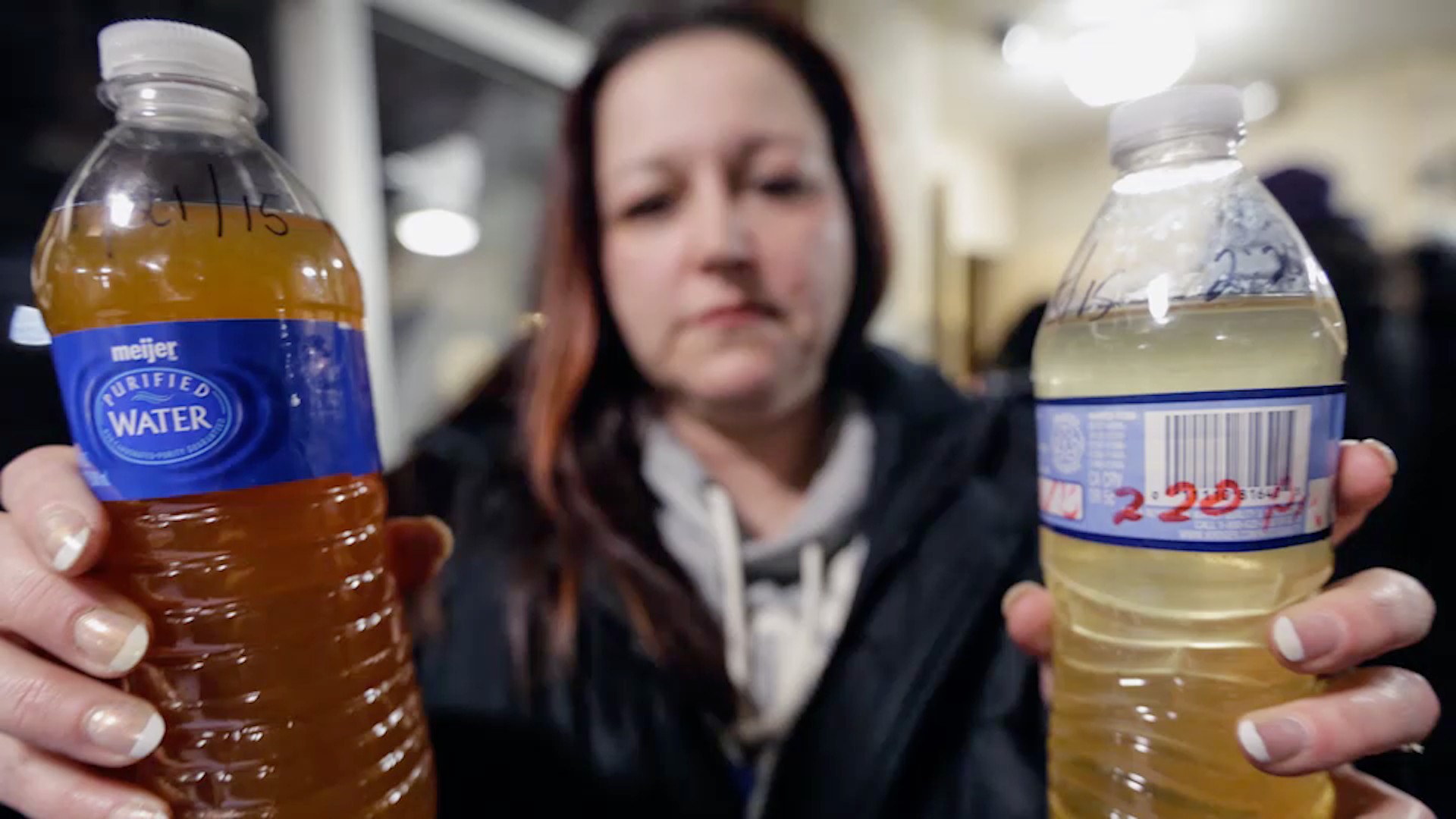Photo via Wikimedia Commons
For many in developed nations, getting clean and fresh drinking water is as easy buying a water filter, knocking back a bottle of Evian, or—if you live in Los Angeles—simply drinking from the tap. It's easy to forget that having clean and accessible water is a luxury that many in the world do not have. Every year, millions of people across the globe die from lack of access to water, or diseases from contaminated water supplies. The biggest tragedy is that there is actually enough fresh water on the earth to provide every person with clean and accessible drinking water. But due to poor infrastructure in developing nations, lack of sanitation, and drought, the earth still sees far too many water-related deaths.Fortunately, there are many organizations fighting to fix this issue, including the United Nations, whose Sustainable Development Goal #6 is devoted exclusively to securing clean water and sanitation for every person on earth.VICE Impact spoke with Lis Mullin Bernhardt, Programme Officer in the Freshwater Unit of UN Environment, and one of the main experts involved in drafting SDG #6. Bernhardt outlined the global strategies behind this goal, why clean and accessible water is so crucial, and what the average citizen can do to help.VICE Impact: Tell me a little bit about the origins of SDG #6, and why it was created.Lis Mullin Bernhardt: Countries are the ones creating these SDGs, but they very often go back to the technical expertise of the UN Agencies and ask for advice on what should be in these goals. Because the issue of water cuts across so many different agencies within the UN, there is a mechanism called UN Water whose job it is to coordinate across the 31 different parts of the UN system that work on water. And so we created, back in 2014, a draft of what SDG 6 could look like. For UN Water, we wrote the technical paper and suggested what the targets could be: You need access to drinking water and sanitation, but you also need to look at water scarcity, water quality, and water resources management. What SDG 6 really does is bring this environmental dimension in-line with the social and economic dimensions of development.
Check out more videos from VICE:
How do you effectively translate SDG 6 for local communities?One of them is identify your most important rivers and water basins. We suggest that every country put into place an integrated water resources management plan, that brings together all the different sectors in your country that use water. And that's primarily agriculture (which uses the most water in the world)—but it's also industry: the energy sector uses water, households use water, and water utilities companies also use water. So you'd be bringing together those different actors in your own country, probably per river basin, to create a water management plan. We also do a lot of work with transboundary water management, because a lot of times the rivers don't originate in your own country.What are some of the main causes of contamination that you see repeated across the globe?We run a water quality monitoring program at UN Environment called GEMS Water: The Global Environment Monitoring System. And what we know from the data that we have, is probably up to 1/3 of all rivers in Latin America, Africa, and Asia — so in developing countries — are affected by severe pathogenic pollution that comes from bacteria, viruses, pretty much from human waste. So we know that the biggest problem worldwide is most likely from a lack of sanitation.What can an average citizen do to help on a smaller scale?Monitoring your water quality is extremely important and many more countries, cities and even individual households should be doing that. I've read that in Flint, Michigan, for example, that the only reason the drinking water issue really came to light is because people started monitoring the water that was coming out of their taps. People took this issue of water quality monitoring into their own hands, with a kind of citizen science.
Advertisement
Advertisement
Check out more videos from VICE:

How do you effectively translate SDG 6 for local communities?One of them is identify your most important rivers and water basins. We suggest that every country put into place an integrated water resources management plan, that brings together all the different sectors in your country that use water. And that's primarily agriculture (which uses the most water in the world)—but it's also industry: the energy sector uses water, households use water, and water utilities companies also use water. So you'd be bringing together those different actors in your own country, probably per river basin, to create a water management plan. We also do a lot of work with transboundary water management, because a lot of times the rivers don't originate in your own country.
One of the most important things for any country is to make sure that your people have access to drinking water and sanitation, and that that's safely managed. That means the water is free from contamination, and also that once you have had sanitation access that your water sources are protected from being recontaminated after you have access.
So there's a whole set-up around safely managed drinking water and sanitation that we help countries establish. It is local, but a lot of country experiences are very much replicable and applicable in other places as well. So people can and should learn from each other."What's pretty clear is that a lack of sanitation is the biggest problem, and the second-biggest problem is a lack of good agricultural management plans."
Advertisement
We also estimate that a seventh of all rivers are suffering from organic waste, and organic pollution that comes from agriculture. So what's pretty clear is that a lack of sanitation is the biggest problem, and the second-biggest problem is a lack of good agricultural management plans.What are good first steps that every country can take toward cleaner, more accessible water?Really easy low-hanging fruit that we should all be aiming for is increasing the amount of treatment of wastewater. What we estimate is up to 80 percent or 90 percent of wastewater globally gets released into water bodies completely untreated. That's both from households as well as from industry. Probably only 10 percent of wastewater worldwide is being treated at all, let alone being treated to a safe level.What a lot of countries are doing is reusing water. You can treat it to a safe level and then you have a new source of water again. So it addresses both the water quality issue and, to a large extent, water scarcity, because you're keeping your water resources. So wastewater treatment is absolutely one of the most important things to do.
Advertisement
People can get also engaged with their local communities, and get involved in local bird counts or frog counts or fish counts and monitoring what's happening with local lakes and rivers. There are so many local environmental organizations that people can and should support. Anyone who loves to be outdoors has a real stake in keeping track of your local community, and raising a flag to local authorities about issues that you see.Globally, there are a lot of organizations that are providing safe drinking water and sanitation to people. Rotary International, Water Aid, water.org, UNICEF, UNHCR and Charity Water all do great work. You can donate or get involved by heading to their websites.This interview was edited for brevity and clarity.READ MORE: Over 2 Billion People Worldwide Don't Have Access to Basic Sanitation Services
